
Helene Bertha Amalie "Leni" Riefenstahl was a German film director, photographer and actress known for producing Nazi propaganda.

Georg Wilhelm Pabst was an Austrian film director and screenwriter. He started as an actor and theater director, before becoming one of the most influential German-language filmmakers during the Weimar Republic.
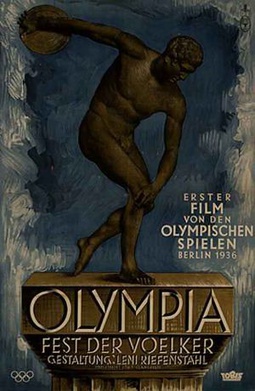
Olympia is a 1938 German documentary film written, directed and produced by Leni Riefenstahl, which documented the 1936 Summer Olympics, held in the Olympic Stadium in Berlin during the Nazi period. The film was released in two parts: Olympia 1. Teil — Fest der Völker and Olympia 2. Teil — Fest der Schönheit. The 1936 Summer Olympics torch relay, as devised for the Games by the secretary general of the Organizing Committee, Dr. Carl Diem, is shown in the film.
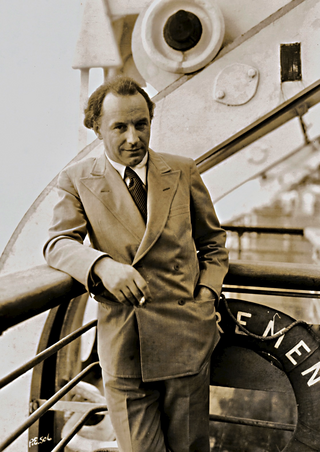
Arnold Fanck was a German film director and pioneer of the mountain film genre. He is best known for the extraordinary alpine footage he captured in such films as The Holy Mountain (1926), The White Hell of Pitz Palu (1929), Storm over Mont Blanc (1930), The White Ecstasy (1931), and S.O.S. Eisberg (1933). Fanck was also instrumental in launching the careers of several filmmakers during the Weimar years in Germany, including Leni Riefenstahl, Luis Trenker, and cinematographers Sepp Allgeier, Richard Angst, Hans Schneeberger, and Walter Riml.
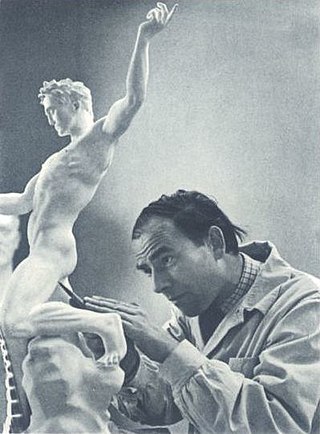
Arno Breker was a German sculptor who is best known for his public works in Nazi Germany, where they were endorsed by the authorities as the antithesis of degenerate art. He was made official state sculptor, and exempted from military service. One of his better known statues is Die Partei, representing the spirit of the Nazi Party that flanked one side of the carriage entrance to Albert Speer's new Reich Chancellery.

Wilhelm Kreis was a prominent German architect and professor of architecture, active through four political systems in German history: the Wilhelmine era, the Weimar Republic, the Third Reich, and the foundation of the Federal Republic.

The Holy Mountain is a 1926 German mountain film directed by Arnold Fanck and starring Leni Riefenstahl, Luis Trenker and Frida Richard. It was the future filmmaker Riefenstahl's first screen appearance as an actress. Written by Arnold Fanck and Hans Schneeberger, the film is about a dancer who meets and falls in love with an engineer at his cottage in the mountains. After she gives her scarf to one of his friends, the infatuated friend mistakenly believes that she loves him. When the engineer sees her innocently comforting his friend, he mistakenly believes she is betraying him.
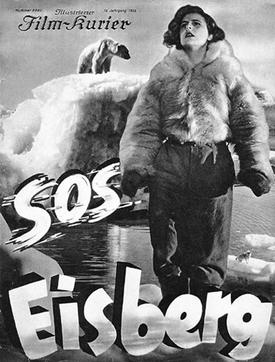
S.O.S. Eisberg is a 1933 German-US pre-Code drama film directed by Arnold Fanck and starring Gustav Diessl, Leni Riefenstahl, Sepp Rist, Gibson Gowland, Rod La Rocque, and Ernst Udet. The film was written by Tom Reed based on a story by Arnold Fanck and Friedrich Wolf. S.O.S. Eisberg follows the account of the real-life Alfred Lothar Wegener polar expedition of 1929-30.
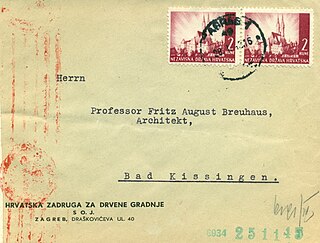
Fritz August Breuhaus was a German architect, interior designer, and designer in the 20th century. He added “de Groot” to the end of his name in 1929. He spread the word of this addition claiming to be the grandson/great-grandson of a reputable painter Breuhaus de Groot. His father, Heinrich Hugo Breuhaus was a dentist and married to his mother Johanne Knipping.

The White Hell of Pitz Palu is a 1929 German silent mountain film co-directed by Arnold Fanck and G. W. Pabst and starring Leni Riefenstahl, Gustav Diessl, Ernst Petersen, and World War I pilot Ernst Udet. Written by Fanck and Ladislaus Vajda, the film is about a man who loses his wife in an avalanche while climbing the Piz Palü mountain, and spends the next few years searching the mountain alone for her body. Four years later he meets a young couple who agree to accompany him on his next climb. The White Hell of Pitz Palu was filmed on location in the Bernina Range in Graubünden, Switzerland.
Ernst Neufert was a German architect who is known as an assistant of Walter Gropius, as a teacher and member of various standardization organizations, and especially for his widely disseminated reference book Architects' data.
Walter Riml was an Austrian cameraman and actor.

Josef “Sepp” Allgeier was a German cinematographer who worked on around fifty features, documentaries and short films. He began his career as a cameraman in 1911 for the Expreß Film Co. of Freiburg im Breisgau. In 1913, he filmed newsreels in the Balkans. He then became an assistant to Arnold Fanck, a leading director of Mountain films. He worked frequently with Luis Trenker and Leni Riefenstahl, both closely associated with the genre. He was Riefenstahl's lead cameraman on her 1935 propaganda film Triumph of the Will. During the Second World War, Allgeier filmed material for newsreels. He later worked in West German television. His son is the cinematographer Hans-Jörg Allgeier.

German: Stürme über dem Mont Blanc is a 1930 German film written and directed by Arnold Fanck and starring Leni Riefenstahl, Sepp Rist and Ernst Udet. The film is part of the German film genre of "mountaineering", popularized by Fanck. The story revolves around a man who works alone at the Mont Blanc weather station gathering data. His only contact with the world below is via Morse code signals. He is joined by a woman friend, who helps him survive a terrible storm over the mountain. Ernst Udet is featured as a pilot who is involved in a dangerous mountain rescue.

Fritz Roeber was a German illustrator, lithographer and history painter, associated with the Düsseldorfer Malerschule. As Director of the Kunstakademie Düsseldorf, he carried out some significant organizational changes.
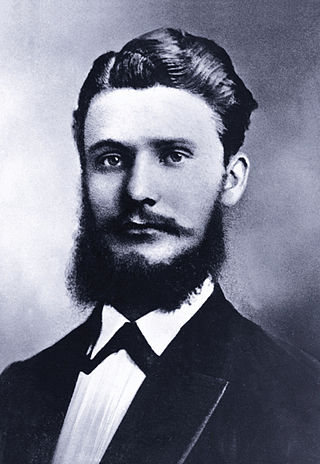
Friedrich ("Fritz") Karl Henkel was a German entrepreneur and founder of the Henkel Group.
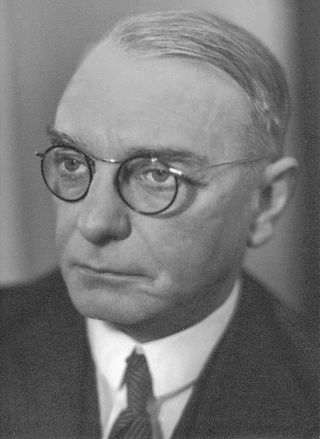
Hugo Wilhelm Henkel was a German chemist and industrialist. He went down in history as the inventor of the Persil detergent.
Roland Weber was a German landscape architect.

Helmut Hentrich was a German architect who became particularly known for his striking high-rise buildings in the 1960s and 1970s. The architectural firm he founded, Hentrich, Petschnigg und Partner (HPP), still exists under the name HPP Architekten.

Moritz Leiffmann was a German private banker, local politician, writer and art collector.

















